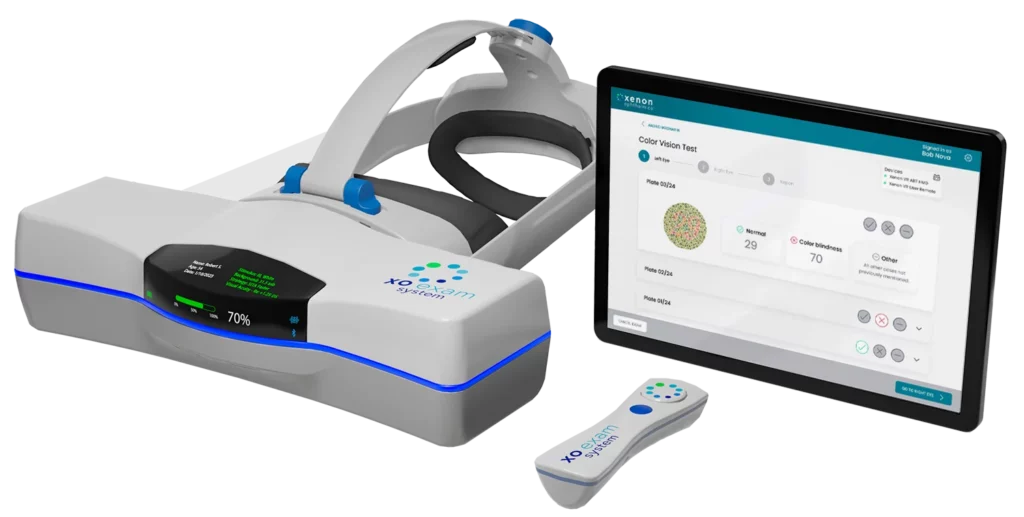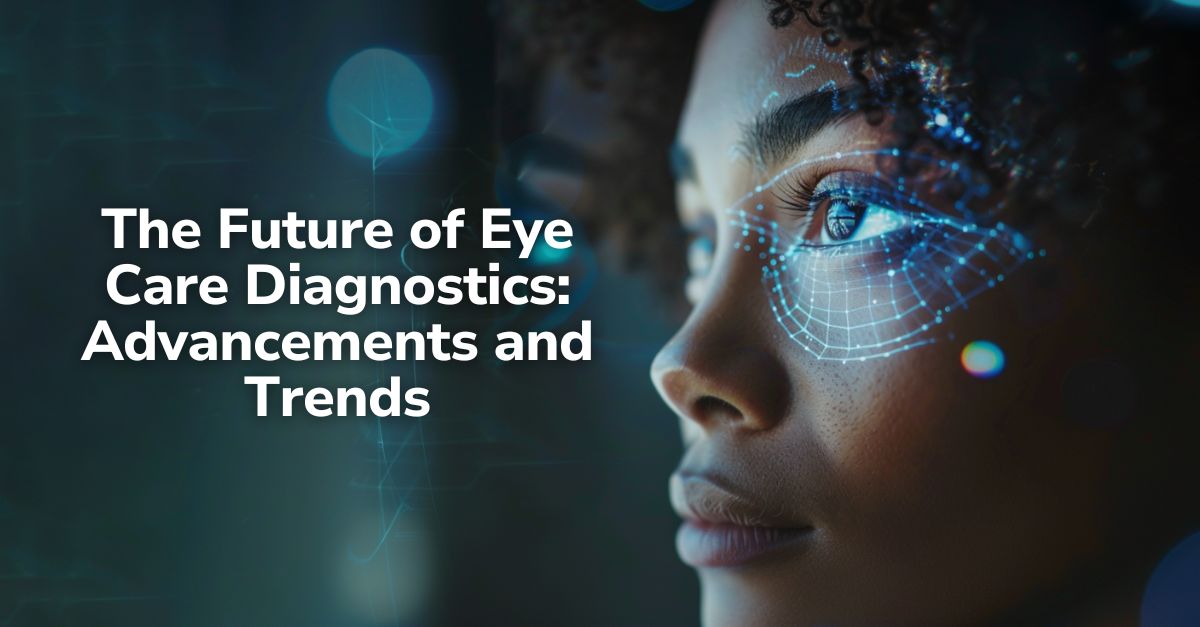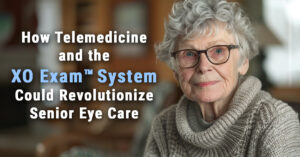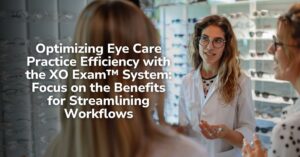While the XO Exam™ System represents a significant leap forward in eye care delivery, the diagnostics field is continuously evolving. This article delves into some exciting emerging trends and advancements that promise to revolutionize how we diagnose and manage eye health in the years to come.
Beyond the Exam Room: Wearable Technology and AI-powered Solutions
The rise of wearable technology holds immense potential for eye care diagnostics. A 2022 study published in Nature Communications found that smart intraocular pressure (IOP) sensors showed promising results in accurately monitoring pressure fluctuations in glaucoma patients [1]. Imagine a future where ‘smart’ contact lenses incorporate this technology and continuously monitor IOP, a critical factor in managing glaucoma.
These wearables could track changes and transmit data securely to healthcare professionals through HIPAA-compliant cloud platforms, enabling proactive intervention and potentially preventing vision loss.
Artificial intelligence (AI) is also poised to play a transformative role. A 2022 report by Accenture predicts that AI in healthcare will reach a global market value of $6.6 billion by 2025 [2]. AI algorithms, trained on vast datasets of eye scans and patient information, can potentially detect early signs of diseases like diabetic retinopathy or age-related macular degeneration with high accuracy. A 2021 study published in Nature Medicine found that an AI system achieved better-than-human-expert performance in detecting diabetic retinopathy from retinal images [3].
This, coupled with smartphone-based apps that utilize AI to analyze eye images captured at home, could significantly improve early detection and intervention rates, potentially significantly reducing blindness caused by diabetic retinopathy.
The Power of Big Data and Telehealth Integration
The future of diagnostics lies in harnessing the power of big data. By integrating data from various sources, including wearable technology, electronic health records (EHRs), and anonymized patient data, healthcare professionals can gain a more holistic view of a patient’s eye health. This data can be used to personalize treatment plans, predict potential risks for developing eye diseases based on genetic predispositions, and identify populations at higher risk for vision loss. A 2020 report by McKinsey & Company suggests that healthcare organizations that leverage big data analytics can achieve cost reductions of 8% to 10% [4].
Telehealth integration will further reshape patient care. Remote monitoring of eye health conditions using wearables and smartphone apps can empower patients to take a more active role in their own health management. A 2023 Telehealth and Medicine Today study found that 81% of patients reported feeling more in control of their health after using telehealth services [5]. The ability to consult with eye care professionals virtually can improve accessibility to care, particularly for those in underserved communities or with limited mobility. In the not-too-distant future, as reported in a recent Eyes on Eyecare article, telehealth consultations using smartphone-camera-based diabetic retinopathy screening apps could prove an effective addition to in-person visits and a method to increase accessibility for a significant portion of patients [6].
A Glimpse into the Future: Personalized and Predictive Eye Care
The convergence of these advancements points toward a future where eye care diagnostics becomes increasingly:
- Personalized: Tailored to individual risk factors and genetic predispositions, as identified through extensive data analysis.
- Predictive: Identifying potential problems before they manifest, allowing for preventative measures and early intervention.
- Preventive: Encouraging early detection and intervention for optimal patient outcomes, potentially reducing the global burden of vision loss.
- Patient-centric: Empowering patients through self-monitoring tools, access to information, and virtual consultations with eye care professionals.
Imagine a future where routine eye exams are less about static snapshots of vision and more about continuous monitoring, proactive management, and personalized preventive care plans. This future will require collaboration between healthcare professionals, technology innovators, and, most importantly, patients themselves.
By embracing these advancements in eye care diagnostics, we can create a world where vision impairment is not a defining aspect of life but a manageable condition. Xenon Ophthalmics remains committed to playing a vital role in shaping this brighter future for vision care through continuous innovation and developing solutions that empower both eye care professionals and patients.
A Comprehensive Approach to Providing Greater Access to Vision Care While Increasing the Quality of the Care Provided

XO Exam™ System
The XO Exam™ System includes diagnostic features of traditional ophthalmic devices like phoropters, autorefractors, and visual field units.
Sources
- Zhang, J., Kim, K., Kim, H., Meyer, D., Park, W., Lee, S. A., Santos, W. L., Kim, B., Moon, H., Shah, J., Harris, K. E., Collar, B., Liu, K., Irazoqui, P. P., Lee, H., Park, S. A., Kollbaum, P., Boudouris, B. W., & Lee, C. H. (2022). Smart soft contact lenses for continuous 24-hour monitoring of intraocular pressure in glaucoma care. Nature Communications, 13(1). https://doi.org/10.1038/s41467-022-33254-4
- Accenture. (2022). AI in healthcare: How artificial intelligence is poised to transform the healthcare industry.
- Gulshan, V., Rajalakshmi R., Jagadeesh, A., Nayar, D., Lobo, P., Becker, J., … Seetharamu, S. N. (2021). Development and validation of a deep learning model for detection of diabetic retinopathy in retinal fundus photographs from population-based screening programs. Nature Medicine, 29(4), 610-618.
- McKinsey & Company. (2020). The potential of big data in healthcare. Retrieved from https://www.mckinsey.com/industries/healthcare/our-insights/the-big-data-revolution-in-us-health-care
- Telehealth and Medicine Today. (2023, May 12). Telehealth Statistics 2023: Facts, Trends & Insights. Retrieved from https://telehealthandmedicinetoday.com/
- Telemedicine’s impact on diabetic retinopathy screenings. (2023, November 29). Eyes on Eyecare. https://eyesoneyecare.com/resources/telemedicine-impact-diabetic-retinopathy-screenings/



